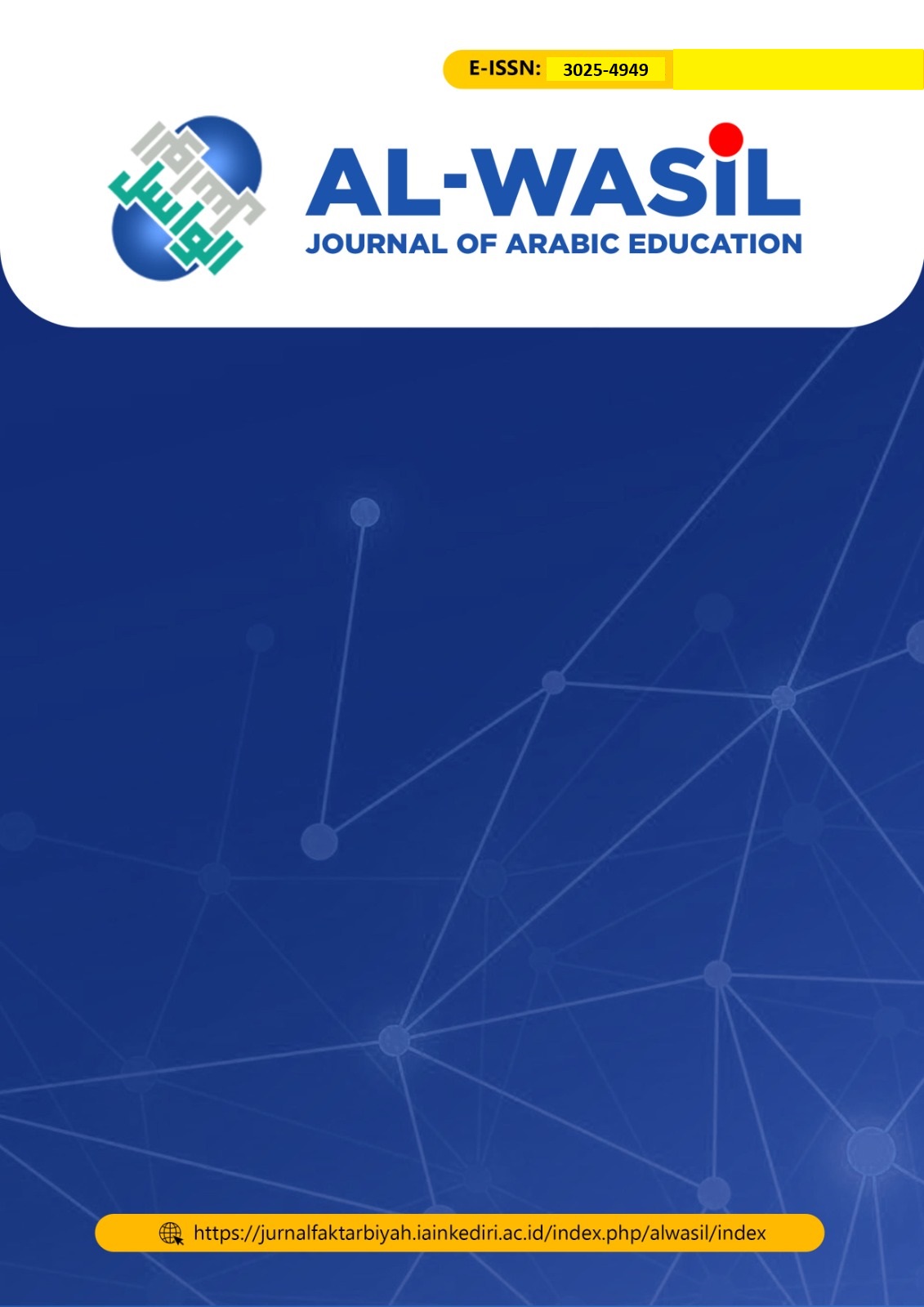سرالإيجاز والإطناب دراسة تحليلية بلاغية
DOI:
https://doi.org/10.30762/alwasil.v2i2.4624Keywords:
Ijaz, Itnaab, brevity, elaboration, Arabic rhetoric, Qur'anic discourseAbstract
This analytical rhetorical study explores the concept of brevity (Ijaz) and elaboration (Itnaab) within Arabic literature and the Qur'an. Ijaz, or brevity, is defined as the expression of a substantial meaning through few words, which, despite their conciseness, fully convey the intended message. In contrast, Itnaab, or elaboration, refers to the art of extending and expanding on a meaning through additional words, providing deeper clarification or emphasis. Both linguistic phenomena serve distinct rhetorical purposes in enhancing the communication of ideas, whether through subtlety or emphasis. The study delves into examples from classical Arabic literature and the Qur'anic text, illustrating how each technique plays a vital role in effective expression. Through a detailed analysis of various passages, this study highlights the balance between conciseness and elaboration in Arabic rhetoric and their respective roles in conveying complex ideas, emotions, and theological concepts. The findings emphasize that both Ijaz and Itnaab contribute to the richness and depth of Arabic and Qur'anic discourse.
Downloads
References
أبي العباس البسيلي, ‘نكت وتنبيهات في تفسير القرآن المجيد’ (منشورات وزارة الأوقاف والشؤون الإسلامية, 2008)
أمير المؤمنين يحيى بن حمزة بن على بن إبراهيم العلوي اليمني, ‘الطراز المتضمن لأسرار البلاغة الجزء الثالث’ (مطبعة المقتطف, 1913) <https://www.noor-book.com/كتاب-الطراز-المتضمن-لاسرار-البلاغه-ج-3-pdf>
ابن الاثير الكاتب، ابو الفتح ضياء الدين, ‘المثل السائر في أدب الكاتب و الشاعر’ (شركة مكتبة ومطبعة مصطفى البابي الحلبي وأولاده, 1358) <https://www.noor-book.com/كتاب-المثل-السائر-في-ادب-الكاتب-و-الشاعر-v-2-pdf>
ابن قدامة, ‘المغني’ (دار عالم الكتب, 1997)
ابن منظور, ‘لسان العرب’ (دار المعارف)
الآلوسي, ‘روح المعاني - المجلد الخامس’ (مؤسسة الرسالة) <https://ia600908.us.archive.org/10/items/roohulmani/Rhmi05.pdf>
الإمام الجليل الحافظ عماد الدين إسماعيل ابن كثير, ‘تفسير القرآن العظيم - المجلد الخامس’ (مكتبة أولاد الشيخ للتراث, 2000)
الإمام بدر الدين الزركشي, البرهان في علوم القرآن (دار المعرفة, 1990) <https://ia800205.us.archive.org/18/items/Brhaan/brhaan03.pdf>
الدمنهري, ‘شرح الجوهر المكنون’ (مطبعة محمد الضبيح بالأزهر, 1931) <https://www.noor-book.com/كتاب-شرح-الجوهر-المكنون-pdf>
السراج, محمج علي, اللباب في قواعد اللغة وآلات الأدب والنحو, I
العلامة جار الله أبي القاسم مححود بن عمر الزمخشري, ‘الكشاف - الجزء الثاث’, Hermeneutik (مكتبة العبيكة, 1998), p. 205 <https://ia601303.us.archive.org/4/items/Kashaf2/kshaf3.pdf>
‘القرآن الكريم’ (مجمع ملك الفهد في طباعة المصحف الشريف) <https://ia802306.us.archive.org/6/items/EQuran00001/E-Quran-00001.pdf>
القرطبي, ‘تفسير القرطبي’, 1992
الكبير, الشيخ, ‘معجم المغني’, 2014, p. 635
الهاشمي, السيد أحمد, ‘جواهر البلاغة في المعاني والبيان والبديع’ (المكتبة العصرية) <https://dn720006.ca.archive.org/0/items/ar114rhet18/السيد أحمد الهاشمي-جواهر البلاغة في المعاني والبيان والبديع.pdf>
حمدوا طماس, ‘ديوان الخنساء’ (دار المعرفة, 1956), pp. 36, 39
عير بنت عبد الله النعيم, ‘الإيجاز والإطناب في القصص القرآني وعلاقته بمقاصد السور’ (جامعة الملك سعود)
محمد إسماعيل المقدم, ‘كتاب تفسير القرآن الكريم - المقدم’, 2024
محمد طاهر ابن عاشور, ‘التحرير والتنوير’ (الدار التونيسية النشر, 1984), p. 753 <https://www.arab-books.com/wp-content/uploads/2022/12/Noor-Book.comD8AAD981D8B3D98AD8B1D8A7D984D8AAD8ADD8B1D98AD8B1D988D8A7D984D8AAD986D988D98AD8B1D8A7D984D8ACD8B2D8A1D8A7D984D8A3D988D9843.pdf>
———, ‘تفسير التحرير والتنوير - المجلد الثامن’ (الدار التونيسية النشر) <https://dn720002.ca.archive.org/0/items/8_20211208/تفسير والتحرير والتنوير ابن عاشور ج8-ب.pdf>
محمد على الصابوني, صفوة التفاسير المجلد الثاني (دار القرآن الكريم, 2017) <https://dn790003.ca.archive.org/0/items/Safwattafasir/satf2.pdf>
Downloads
Published
How to Cite
Issue
Section
License
Copyright (c) 2024 Asmakin Antoro

This work is licensed under a Creative Commons Attribution 4.0 International License.











